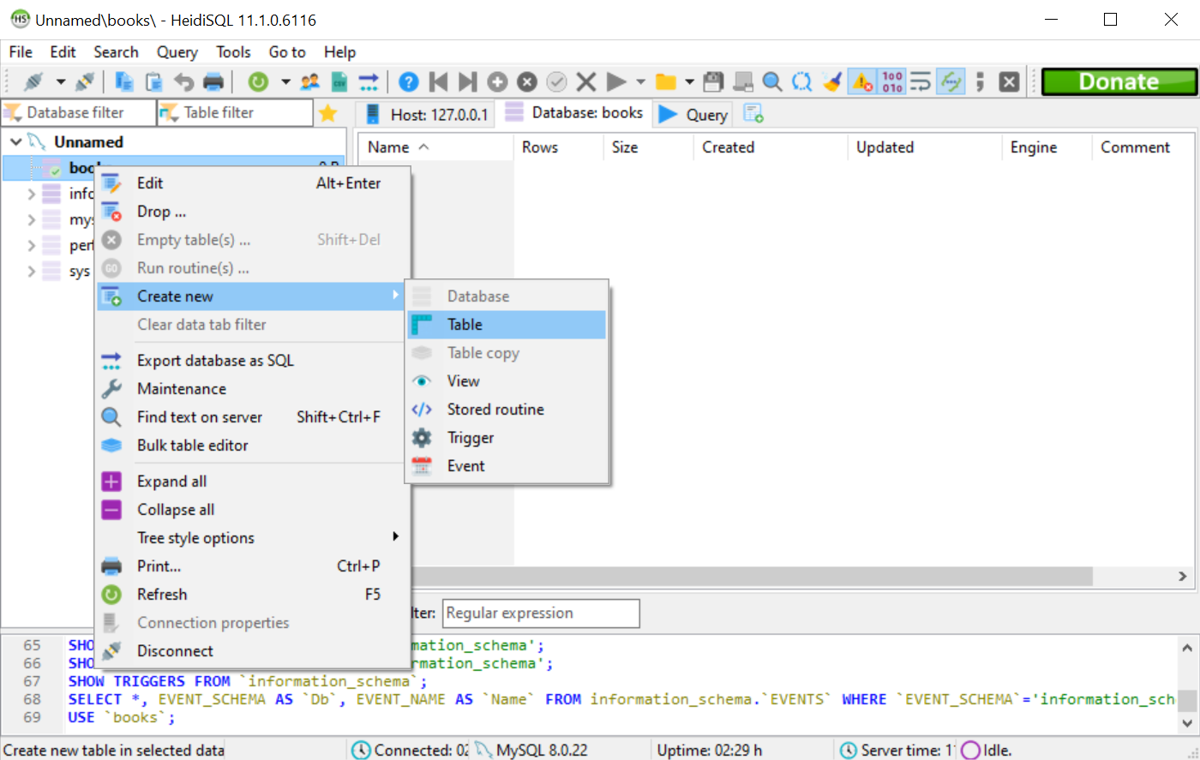
Let’s enter a simple query to check that everything worked: This means that pgAdmin copied three rows into our table. In our case, the result is a COPY 3 message. It’s usually a comma, but it can be a semi-colon, a space, or something else.įinally, use the HEADER keyword to skip the header (i.e the row containing the column names) when copying data from the CSV. Important: you need to specify the DELIMITER, which is the character used to separate the values in the CSV file. In my case, it is the C drive and the a folder. In the second line (after the FROM clause), enter the path to your file. In the first line, enter the name of your table. Import the CSV fileĪgain, you can use the Query Tool and type an SQL query. You just created a table! If you don't see it in the tree, right-click on Tables and select Refresh. For now, we won’t worry about the other (more advanced) features here. By clicking SQL, you can view the SQL query used to create the table. Notice that you can set the column to be non-NULL and specify a primary key here as well. We know what data we want to include in each column, so everything should look like this: It's better to learn the basics and avoid making mistakes.

If you don't know what data types to enter, I recommend taking the Data Types in SQL course. You’ll also need to specify the data type that each column will contain. Remember that column names must match those in the CSV file. In the same window, click on the Columns tab and add the appropriate columns by clicking the + button.

Select Create and then Table.Ī new window will pop up asking you to enter a name for the new table. Instead of writing a SQL Query, you can also right-click on Tables in the tree on the left. Make sure the columns have the same names and values as those in the CSV file. Using the internal Query Tool in pgAdmin, you can first create a table with an SQL query: There are two methods, and I will show you what to do step by step. Let's go back to our characters.csv file and try to import it into our database via pgAdmin. Now we can get down to business and import some data. I assume that you already have Postgres and pgAdmin installed on your computer and that you have them set appropriately. If you would like me to devote an article to the various SQL editors out there – including those for PostgreSQL databases – let me know in the comments. Plus, there are many extensions that allow you to freely adapt the program to your needs.Īlternatives to pgAdmin include DBeaver, Navicat, HeidiSQL, and OmniDB. You can also use the classic console to write in it. PgAdmin allows you to administer databases and their replicas, create all database objects, issue queries, and analyze the query plan (presented in classic or graphic form).
SQL TABS TO CSV FULL
Full functionality and no fees make pgAdmin perfect for me. This will be an important argument for many people. It may be used on Linux, Unix, macOS, or Windows, and because it is open-source, it's free. What is pgAdmin? It is a graphical PostgreSQL database management program. It's a great tool that has never let me down. I got used to pgAdmin and honestly I don't see any point in changing to anything else. There are tons of different SQL editors on the market that support PostgreSQL. If you’ve read that article, you know that Postgres is easy to set up and one of the most popular DBMSs in the world.
SQL TABS TO CSV HOW TO
Some time ago, my friend Ignacio showed you how to install and set up PostgreSQL on Windows 10. I think you understand the uses and advantages of CSVs, so let’s move on to the tool we’ll use to import them: pgAdmin. This is a very tiny data set, but you can imagine what it would be like with many columns and thousands of rows. Here’s the same information in CSV format: I wonder if you recognize the data I put there. Have a look at the differences between storing data in a table and storing it in a CSV. In addition, CSVs are text files and thus are quite small transferring even large data sets is not a problem. CSVs are the surest way to save your data they are read by almost all office suites and database management systems (DBMSs). Imagine that you need to export data from a database to a spreadsheet or vice versa.

When are CSV files used? Transferring data from one program or platform to another is a main use. This standard is supported by many applications and programs, including Microsoft Office, LibreOffice, and Google Sheets. It is a format for storing data in text files. Don’t worry – it’s easy! What Is a CSV file?ĬSV is short for comma-separated values. We’ll start by explaining what a CSV file is, then we’ll introduce you to pgAdmin and show you how to do the import process. Let's get right into importing CSVs into a Postgres database. Do you work with data and use CSV files? Here is a practical guide on how to import such files into a PostgreSQL database using pgAdmin, one of the best PostgreSQL editors on the market.


 0 kommentar(er)
0 kommentar(er)
